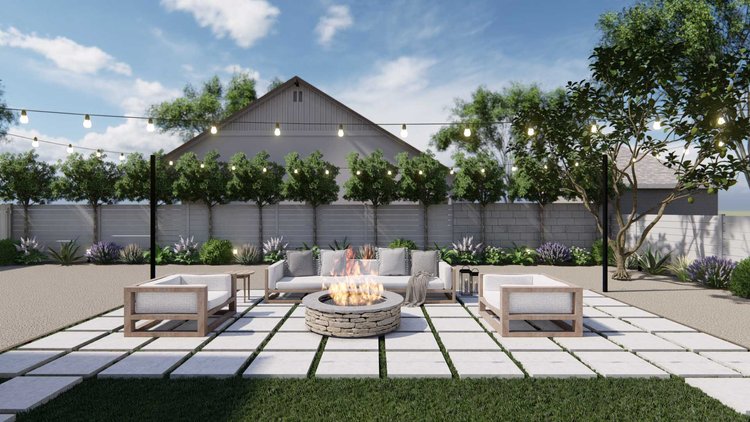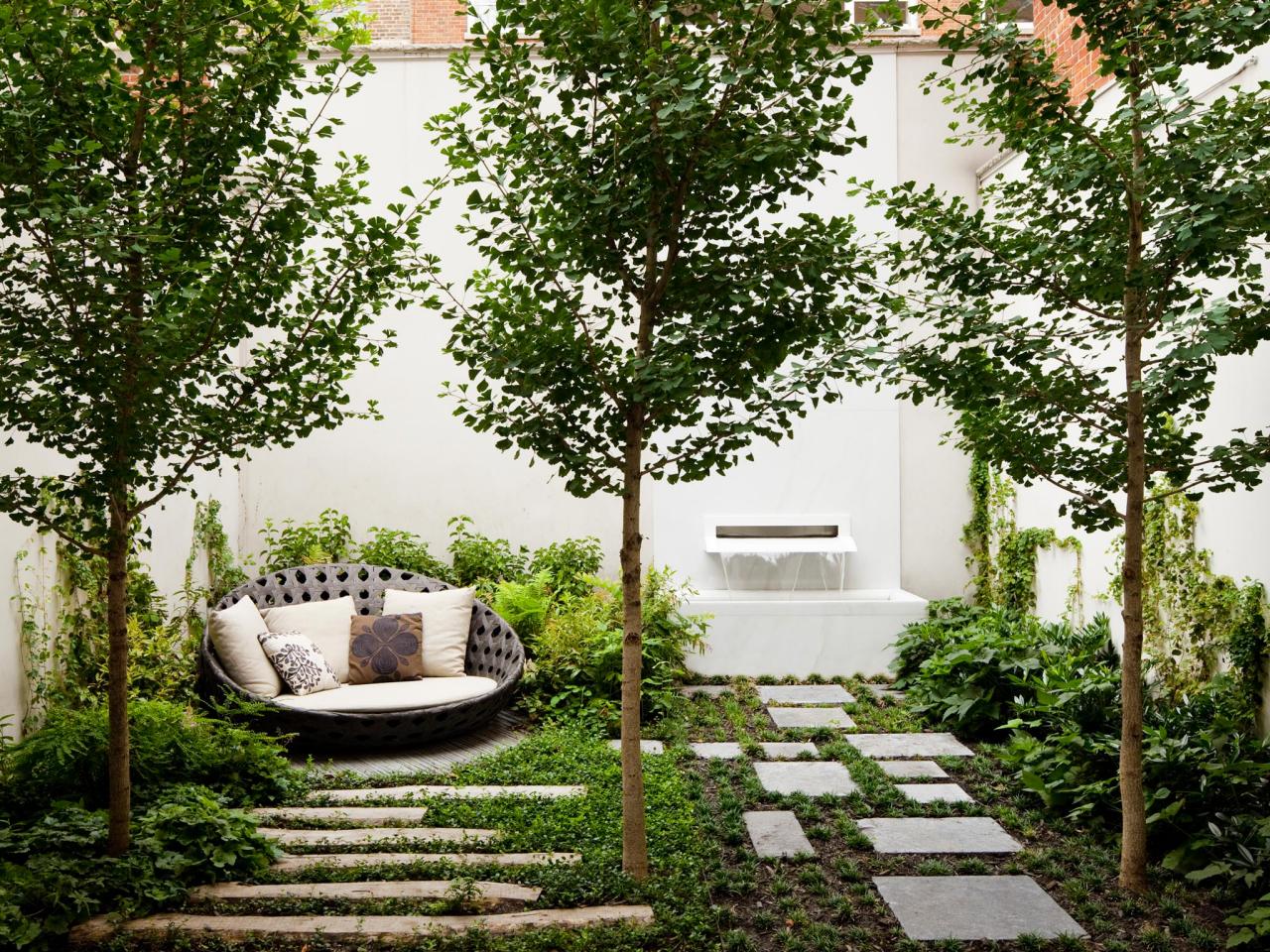Raise Your Outdoors with Ogden Edge Design Company Landscape Proficiency
Transforming Your Landscape With Lasting Style
By incorporating eco-friendly layout elements, choosing native plants, and carrying out water preservation methods, one can create a greener and extra lasting landscape. In this discussion, we will certainly check out the different benefits of sustainable landscaping, dive right into the means to incorporate green design elements, and share pointers and methods for keeping a lasting yard. If you're looking to change your landscape right into a lasting sanctuary, maintain reading to uncover the keys to accomplishing a greener and a lot more environmentally pleasant exterior space.
Advantages of Lasting Landscape Design
Lasting landscaping supplies numerous benefits for both the setting and property proprietors. By including drought-tolerant plants and effective irrigation systems, sustainable landscaping decreases water usage considerably.
Another benefit of sustainable landscape design is the decrease of chemical use. Standard landscaping typically counts on pesticides and fertilizers, which can harm the environment and human health. In comparison, lasting landscaping practices focus on all-natural insect control methods and natural fertilizers, decreasing the need for unsafe chemicals.

Last but not least, lasting landscape design can increase property value. A properly designed lasting landscape not just enhances the aesthetic charm of a property yet additionally shows a commitment to ecological obligation. This can bring in possible customers and occupants that value sustainable methods, causing greater building demand and worth.
Including Eco-Friendly Style Elements
Indigenous plants should additionally be prioritized in landscape layout, as they are adapted to the neighborhood climate and require less water and maintenance. In addition, including lasting materials is important. Including these environment-friendly design elements not just benefits the setting yet also creates a sustainable and gorgeous landscape for property proprietors to take pleasure in.
Choosing Indigenous Plants for a Lasting Garden
When designing a sustainable yard, one critical element to take into consideration is the option of indigenous plants. Native plants are those that naturally occur in a specific area or environment and have actually adjusted to the regional environment, soil conditions, and wildlife. By selecting native plants for your yard, you can produce a low-maintenance and lasting landscape that profits both the atmosphere and the neighborhood community.
Indigenous plants have advanced over time to be appropriate to the local conditions, making them a lot more durable and less dependent on pesticides, fertilizers, and extreme watering. They additionally give habitat and food resources for neighborhood wildlife, such as birds, butterflies, and , which are crucial for pollination and biodiversity.
When choosing indigenous plants for your garden, it is very important to think about factors such as sunshine needs, soil kind, and water demands. Researching and getting in touch with with regional baby rooms or gardening experts can help you recognize the indigenous plants that are best fit for your certain location.
In enhancement to their ecological advantages, indigenous plants can likewise include charm and diversity to your yard. They are available in a variety of dimensions, shades, and shapes, enabling you to develop a aesthetically appealing and special landscape.
Water Preservation Methods for a Greener Landscape
To develop a much more environmentally-friendly and lasting yard, carrying out water preservation strategies is crucial for a greener landscape. Water is a valuable resource, and as our population grows and environment change increases, it becomes increasingly crucial to conserve water in our landscapes.
One efficient water conservation method is utilizing mulch. Using a layer of compost around plants and in yard beds assists to preserve moisture in the soil, reducing the requirement for regular watering. Compost also helps to subdue weed development, which can compete with plants for water.
Another strategy is the use of drip watering systems. Unlike standard look at this now lawn sprinkler that spray water right into the air, drip irrigation provides water directly to the roots of plants, minimizing dissipation and water waste. Drip irrigation systems can be easily set up and gotten used to satisfy the specific water demands of different plants.
Rain harvesting is one more beneficial technique for water conservation. By gathering rainwater from downspouts, roofing systems, and rain gutters, you can save it in barrels or containers for later usage in watering your yard. This not just reduces the demand for municipal water however additionally guarantees that rainwater, a natural and free resource, is placed to good use.
Last but not least, proper maintenance of watering systems is vital for water conservation (Ogden Edge Design Company). Regularly inspecting and repairing any type of leakages or broken lawn sprinkler heads can prevent water loss and make sure that water is being utilized effectively
Preserving a Sustainable Yard: Tips and Tricks
Executing correct maintenance methods is important for maintaining a lasting garden. By following a few pointers and methods, you can make sure that your yard stays healthy and balanced, dynamic, and ecologically pleasant.
One of the most vital facets of preserving a sustainable garden is proper watering. By watering your plants deeply and less frequently, you can urge deep origin development and reduce water waste. In addition, utilizing a drip irrigation system or rainwater harvesting can additionally conserve water sources.
Normal weeding is an additional vital upkeep method. Weeds complete with your plants for nutrients and water, Recommended Reading so it's important to remove them promptly. Take into consideration making use of natural compost to reduce weed development and preserve wetness in the dirt.
Composting is an exceptional method to recycle natural waste and enrich your garden dirt. By creating a compost pile, you can transform cooking area scraps, lawn trimmings, and other natural materials right into nutrient-rich compost. This will not just reduce waste however likewise enhance soil wellness see this page and fertility.

Routine trimming and proper plant treatment are additionally necessary for keeping a lasting yard. Pruning aids advertise healthy and balanced development, boost air circulation, and stop the spread of conditions. Furthermore, giving ample sunshine, dirt nutrients, and security from severe weather condition conditions will certainly assist your plants grow.
Final Thought
By integrating environmentally friendly style components and choosing native plants, people can produce a lasting garden that sustains neighborhood biodiversity and calls for much less upkeep. In general, maintaining a sustainable yard needs careful preparation and continuous dedication, but the benefits are well worth the effort.
By integrating environmentally friendly layout aspects, choosing indigenous plants, and executing water conservation strategies, one can develop a greener and much more sustainable landscape. In this conversation, we will certainly check out the different benefits of lasting landscape design, dive right into the methods to integrate environmentally friendly design components, and share pointers and techniques for preserving a lasting yard. By integrating drought-tolerant plants and effective watering systems, sustainable landscaping reduces water usage dramatically. By selecting native plants for your garden, you can develop a low-maintenance and sustainable landscape that profits both the environment and the local community.
By including green design components and choosing indigenous plants, people can develop a lasting yard that supports neighborhood biodiversity and requires much less maintenance.